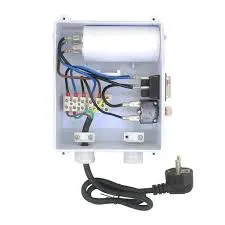The Importance of Floor Tape in Modern Workspaces
In today’s fast-paced work environments, safety and organization are paramount. One effective tool that has emerged as essential for enhancing safety and maintaining order is floor tape. While seemingly simple, this versatile adhesive product plays a crucial role in various applications, from industrial facilities to office spaces, ensuring that operations run smoothly and safely.
What is Floor Tape?
Floor tape is a type of adhesive tape designed specifically for marking floors. It comes in various colors, patterns, and widths, making it suitable for a multitude of uses. High-visibility colors such as yellow, red, and green are commonly used to convey specific messages. For instance, yellow typically indicates caution, while red may signify a danger zone. This visual differentiation helps to keep employees informed about potential hazards and promotes a culture of safety within the workplace.
Benefits of Using Floor Tape
One of the primary benefits of floor tape is its ability to improve safety. In warehouses and manufacturing facilities where heavy machinery operates, clear pathways and designated zones are crucial. Floor tape can be used to mark these pathways, ensuring that employees know where to walk and what areas to avoid. This is particularly important in minimizing accidents and injuries, as workers are less likely to encroach on hazardous zones when they are clearly marked.
Beyond safety, floor tape promotes organization. A well-organized workspace can increase productivity by reducing chaos and confusion. With floor tape, businesses can create defined areas for equipment, materials, and personnel. For example, using floor tape to outline storage areas for pallets or tools can help ensure that everything has its place. This not only streamlines operations but also makes it easier to conduct inventory checks and manage resources.
floor tape

Applications of Floor Tape
The applications of floor tape are diverse and span across various industries. In manufacturing plants, it can be used to delineate workstations, walkways, and safety zones. In retail environments, floor tape can guide customers to specific areas, promote social distancing, and highlight sales or promotions. Furthermore, educational institutions use floor tape to create safe play areas or mark hallways, ensuring that students can navigate the space safely.
For facilities undergoing renovations or changes in layout, floor tape serves as a temporary yet effective solution. Instead of painting or permanently altering the floor, floor tape can be quickly applied and removed to accommodate shifting needs without costly downtime.
Durability and Ease of Application
One of the most appealing aspects of floor tape is its durability. Many products are designed to withstand heavy foot traffic, machinery, and even chemicals, ensuring longevity. Furthermore, floor tape is user-friendly; it can be easily applied to any clean, dry surface. Most manufacturers offer clear instructions, allowing staff to put down the tape without needing specialized training or tools.
Conclusion
In conclusion, floor tape is an invaluable asset in enhancing safety and organization in modern workspaces. Its visibility, versatility, and ease of use make it a preferred choice for businesses seeking to foster a safe and efficient environment. As industries continue to evolve and prioritize employee well-being, the role of floor tape will only become more significant. Investing in quality floor tape can lead to numerous benefits, from reducing accidents to improving overall productivity. As we move forward, it’s essential for businesses to recognize the power of this simple yet effective tool in creating safer and more organized workspaces.
-
XIANGFAN Rubber Tape-Ultimate Solutions for All Your Insulation NeedsNewsJun.24,2025
-
XIANGFAN Rubber Tape-Protection for Industrial and Residential ApplicationsNewsJun.24,2025
-
XIANGFAN Rubber Tape: Superior Safety and Sealing for Demanding EnvironmentsNewsJun.24,2025
-
XIANGFAN Rubber Tape: Reliable Solutions for Every Electrical ChallengeNewsJun.24,2025
-
XIANGFAN Electrical & Industrial Tape: Powering Reliability Across IndustriesNewsJun.24,2025
-
XIANGFAN Electrical & Industrial Tape: Excellence in Every ApplicationNewsJun.24,2025
